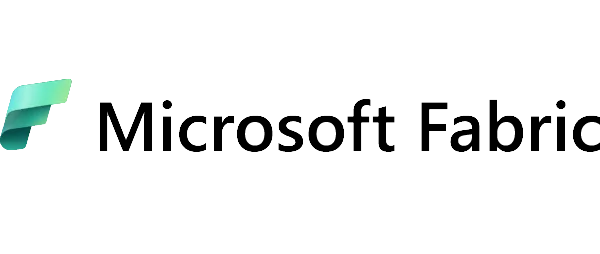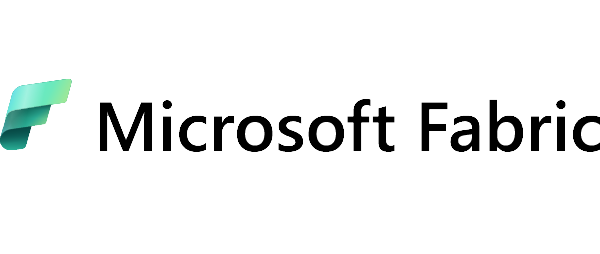
The digitization of public administration is not only about digitizing forms, but above all about building a unified data ecosystem in which registers, transaction systems, and archives can work together in real time. Microsoft Fabric—a fully managed SaaS analytics platform—was designed with these challenges in mind. It combines data integration, storage, processing, and visualization capabilities in a single environment, eliminating the need to maintain multiple separate cloud services. Let’s take a closer look at its functionalities in the context of its use in the public sector.
What is Microsoft Fabric?
Microsoft Fabric builds a “single lake” data architecture (OneLake) based on Azure Data Lake Storage Gen2. Every resource—from raw CSV files to IoT streams to replicated transactional databases—goes into this shared repository and is accessible through a unified semantic model.
Imagine a vast, well-organized warehouse where boxes of invoices, survey results, sensor files, and financial reports can all be stored side by side. OneLake is just such a “warehouse” in the cloud—it collects all your data in one place, so you don’t have to search for it across different systems or copy it from computer to computer.
Microsoft Fabric comprises several tightly integrated workspaces:
Data Factory – a production line for data
If OneLake is a warehouse, Data Factory acts as an automated production line that delivers new “packages” of data, cleans them, and puts them on the right shelf. You don’t have to move files or program complex scripts manually—you set the rules once, and everything works on its own, 24/7.
Data Engineering – a workshop for data DIY enthusiasts
In every company, there comes a moment when you need to do something unusual: combine two sets of data, create a forecast, check sales seasonality. The Data Engineering module is a place where “tinkerers” – analysts and data scientists – can freely experiment without affecting production data.
Data Warehouse – a warehouse for quick reporting
When management asks, “How much did we spend this quarter?” or “How was the cash flow?”, we want an instant answer. The data warehouse in MS Fabric stores key figures in a report-ready format, so results appear in seconds, not hours.
Real-Time Intelligence – live preview
Need to know now, not tomorrow? The Real-Time Intelligence module receives data on an ongoing basis – for example, from road sensors or the cash register system – and immediately shows what is happening. It’s like a security camera, but for numbers – it allows you to react before a minor problem turns into a crisis.
Power BI – clear reports and dashboards
Even the best data is useless if you have to spend hours analyzing it in a spreadsheet. Power BI turns columns of numbers into interactive charts and indicators that everyone can understand at a glance. It also makes it easy to share reports with colleagues or citizens.
Copilot & Azure AI – your personal assistant for analytics
Copilot is a built-in AI-powered “search engine”: you can type in a question in plain language—for example, “Show me which departments exceeded their budget in June”—and in a moment you get a ready answer with a visualization. It works like a trusted advisor who knows your data inside out and can “extract” valuable insights from it.
Thanks to a common interface, users—regardless of their role (analyst, data scientist, civil servant)—work in the same space, which significantly reduces time-to-insight.
Key benefits for the public sector from implementing Microsoft Fabric
1. Data centralization
Microsoft Fabric enables data from various systems and registers to be collected in a single, shared environment – OneLake. This means that officials no longer need to use multiple tools and sources – all information is available in one place, always up to date and ready for analysis. This greatly simplifies daily work and reduces decision-making time.
2. Safety and regulatory compliance
The platform meets strict data protection requirements, including the GDPR, the National Interoperability Framework, and the National Cybersecurity System Act. Data is encrypted, access to it is controlled, and the entire infrastructure is regularly audited. This ensures that the institution operates in accordance with the law and does not expose itself to the risk of data loss or penalties.
3. Automation and time savings
Thanks to tools such as Data Factory and Copilot, many tedious and repetitive tasks—such as preparing reports, organizing data, and searching for information—can be automated. This means more time for strategic activities and less manual work for officials.
4. Better quality of analyses and reports
Integrated analytical tools, such as Power BI, allow you to create clear, interactive reports that can be easily shared with supervisors, colleagues, or citizens. Data is presented in an understandable and readable way—without the need for advanced technical knowledge.
5. Scalability and flexibility
Fabric operates in the cloud, which means that you can adjust its scale to your current needs and budget – start with a small pilot project and then develop the system as demand grows. This is particularly important for public institutions, which need to operate flexibly and often under conditions of limited resources.
6. Faster and more accurate decisions
With up-to-date, well-organized data and quick access to analytics, public institutions can respond more quickly to citizens’ needs, plan budgets, evaluate the effectiveness of social programs, and implement changes where they are most needed.
All these elements make Microsoft Fabric a real support for the digitization of administration and improve the functioning of public institutions on many levels – from the daily work of officials to strategic management.
Sample scenarios for using Microsoft Fabric in the public sector
· E-services and contact center support
Microsoft Fabric supports the creation of modern, accessible, and personalized e-services through the use of built-in Copilot artificial intelligence. Government agencies can build interactive chatbots that understand natural language and can answer citizens’ questions even outside of business hours. Importantly, Copilot can operate in multiple languages and is based on applicable laws, regulations, and local rules. Officials do not have to refer to documents each time—they receive prompts from Copilot that help them handle requests faster and more accurately. For citizens, this means shorter waiting times, more accurate information, and round-the-clock availability of services.
· Public health
The healthcare sector collects vast amounts of data – from electronic medical records, through data from patient devices (e.g., blood pressure monitors or glucometers), to epidemiological records. Microsoft Fabric allows this data to be integrated in one place and then analyzed in real time. This enables hospitals and clinics to, for example, forecast the number of patients in the emergency room, evaluate the effectiveness of preventive programs, or better plan staff schedules. This approach significantly improves the quality of facility management and patient safety, while reducing operating costs.
· Smart City and infrastructure
Modern cities are increasingly using data from sensors – on air quality, traffic intensity, noise levels, waste container fill levels, and energy consumption. Microsoft Fabric enables the collection of this data in real time, its analysis, and quick decision-making. For example, a city can automatically adjust traffic lights to actual traffic conditions or optimize garbage truck routes to reduce travel time and CO₂ emissions. This tool supports smart urban infrastructure management, improves residents’ quality of life, and reduces local government operating costs.
· Public finances
Microsoft Fabric enables the creation of a central data warehouse that combines information from budget plans, accounting systems, public procurement, and budget execution. This allows the finance department to perform detailed real-time analyses without having to copy data into spreadsheets manually. An example? An official can immediately check which units have exceeded their spending in a specific budget classification section or how budget execution has changed in a given month. Such transparency and automation support decision-making, facilitate controls, and increase citizens’ trust in public finances.
Each of the above scenarios shows how Microsoft Fabric can support the public sector in its daily challenges – streamlining operations, improving service quality, and facilitating the delivery of public services in a more transparent, modern, and efficient manner.



